Interview: Ivana de Vivanco | Leipzig, Germany
By Liz Janoff
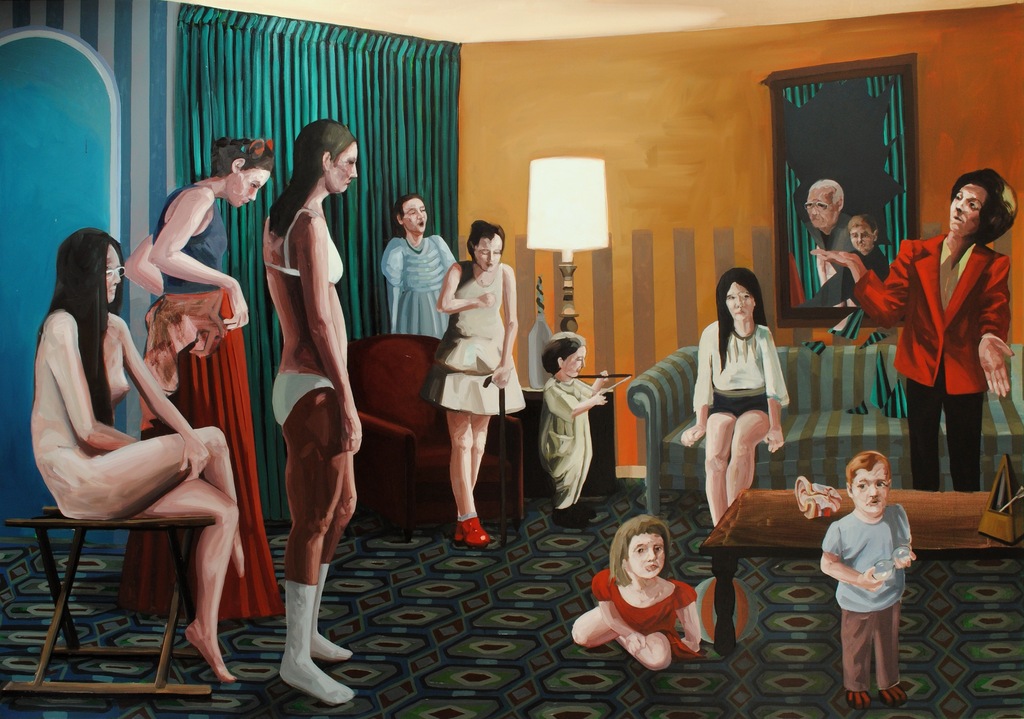
For over two years, artist Ivana de Vivanco has created paintings inspired by Imagines, an Ancient Greek two-volume text attributed to the Greek writer and Sophist teacher Philostratus. Written in the second century AD, Imagines is a collection of poetic essays, which aim to describe a series of primarily mythological paintings to a young audience. Composed as rhetorical exercises, Philostratus' descriptions are concerned with the works’ narrative elements––the stories being told and mythical characters being portrayed––and pay little to no attention to the artists or technical attributes of the paintings.
With no actual material evidence of the ancient paintings’ existence, Vivanco's interest in the ekphrastic form of the Imagines essays initially inspired her artistic undertaking to reconstruct several of the immaterial works from the descriptions. Rendered in large-scale oil paintings, the results depict ghostlike mythical characters painted into unusual settings––that of modern home interiors furnished in 60s or 70s style décor. Through the process, Vivanco reflects on translations between text and image, literary and visual arts, and old historical and contemporary painting practices.
Read the Imagines descriptions by Philostratus online here.
Originally from Santiago, Chile, Vivanco now lives and works in Leipzig, Germany. She studied at the University of Chile in Santiago and at the Leipzig Academy of Visual Arts.
When did you first come across Imagines by Philostratus? What inspired you to create your own paintings from the descriptions?
I learned about the existence of the text in another book I read, but I don’t remember which one. What I do remember is that what obsessed me when I started the project based on Imagines by Philostratus was the absence of the pictures described. I was excited by the idea of being somehow the savior of those immaterial paintings. I wanted to reconstruct the descriptions and rescue something like a visual heritage lost forever. I quickly realized that this goal was absurd, not only because the great painters from the Renaissance and Baroque periods already tried reaching that goal, but also because the question concerning the real existence of the paintings and their survival was not really relevant. There were a thousand more interesting issues involved when I decided to create my own pieces from the text in terms of confronting word and image. It was precisely this ekphrasis that helped me complicate my work and reflect on the relationships between poetry and painting.
In recreating the real, but 'immaterial' images from the text, in what ways are you translating Philostratus' descriptions and in what ways are you appropriating the images described? What is significant, in your mind, about this process?
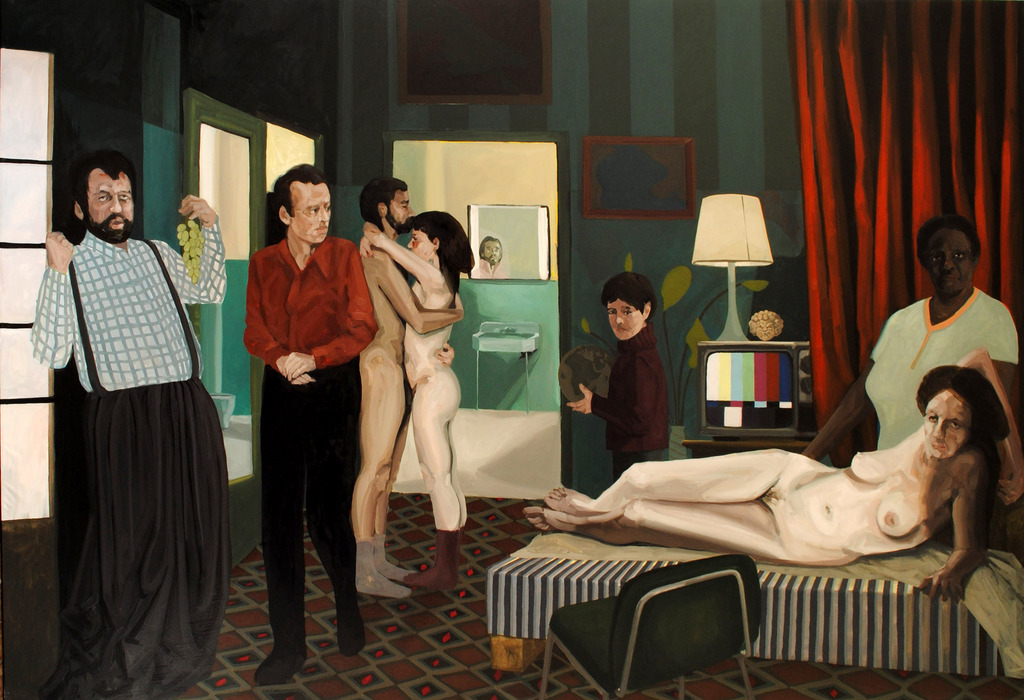
With ‘translating’ I’m referring, on the one hand, to that exercise of displacement between text and image and vice versa. This is a complex back and forth movement: the Philostratus description born from a picture, then I invent an image from the text, and now here we are again discussing or generating text from the image I created. In this sense, it has been very rewarding to verify how each medium of expression is enriched by exchanging codes of representation with each other.
On the other hand, translating in the sphere of art also means appropriating something. An artist appropriates an issue precisely when he is able to interpret it, using his own language he invented. Only then is the work authentic. It would make no sense to me to paint Ariadne as other artists have already. My Ariadne has to be really mine, though she preserves some of her characteristic features. A Philostratus scholar I met at my University told me she was impressed by piece: “That is a totally contemporary Ariadne,” she said. “She maintains her [traditional] pose waking up from sleep, but she is tired and her body shows discomfort. It is as if the character were thinking, ‘I’m sick of maintaining this posture for ages!’”
We live in a specific place and time, I have my own story and this obviously determines the images I make.
Can you discuss some of the specific directions you were given for one of your paintings and how you chose to interpret them? In Narcissus, for example, what were some of the written descriptions and how did you resolve them in your painting?
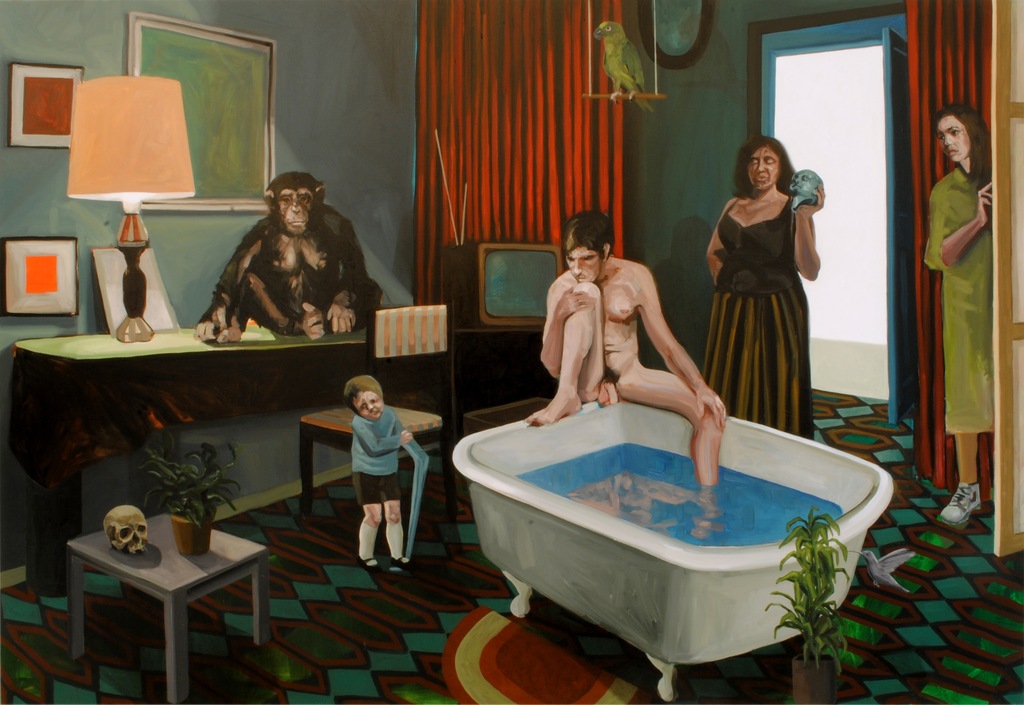
Maybe I shouldn’t answer this question because it is up to the viewer to decipher the mysteries of the picture! But here are a couple of clues:
First of all, for description of Narcissus, Philostratus refers to a subject he treats throughout the entire book: the problem of representation. He writes, “the pool paints Narcissus, and the painting represents both the pool and whole story of Narcissus.” He later describes ‘a bee settling on flowers,’ writing, “The painting has such regard for realism that it even shows drops of dew dripping from the flowers and a bee settling on the flowers––whether a real bee has been deceived by the painted flowers or whether we are to be deceived into thinking that a painted bee is real, I do not know” [Read more of the excerpt here]. It is this sense that in addition to a hidden bee in my painting, I painted other animals that in art history have been used allegorically as symbols of pictorial activity because they mimic human actions––the monkey and the parrot, for instance. I also included a little bird alluding to the myth of Perrhaisos and Zeuxis that is well known to Philostratus and important in relation to ‘the problem of representation.’
The great subject of Narcissus is the trap of representation; in fact Narcissus [in the story] is the most tricked by the illusion. The description also definitely addresses vanity. In relation to this, I incorporated new images into my painting including a skull––a main element of Dutch Vanitas paintings––and a boy tangled up in himself, among others.
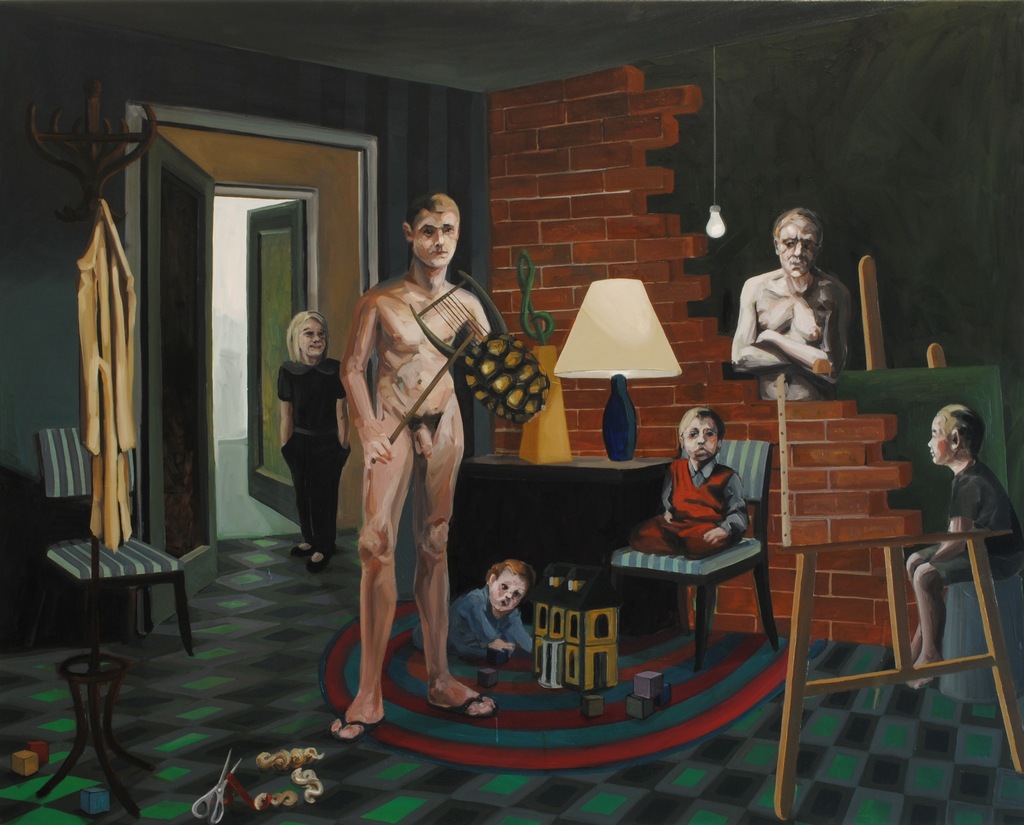
The television sets, lamps, modern furniture, etc., are of course, not from the second century A.D. How did you choose the contemporary elements, and how do they intersect with the narratives and mythological figures presented?
Of course, there is a clash between the mythological subject matter and the scenography generated. But it is this contrast or gap between the subject and the setting that is interesting to me. I chose to work with Greek mythology––a commonly represented and discussed topic in art history––and thought it would be completely boring to replicate the already recognizable methods of depicting such familiar stories. It motivates me to collect these myths, common in Western imagery, and give them a twist, look at them from another perspective. One of the ways to do this is by inserting them into unusual spaces: theatrical stages, living rooms, private bedrooms with furniture from the 50s’, 60’s, and 70s, etc.
Moreover, in order to interpret Philostratus’ descriptions, I worked with what I have close at hand. I am a thief of images and ideas that I find in literary works, in film frames, theatrical productions, old family albums, pictures that I casually discover in magazines, newspapers, or on the internet, in street markets and corners of the city, and of course, in the history of art. That’s the way I have to work with the theme––using images that are already mine, which I have collected or stolen.
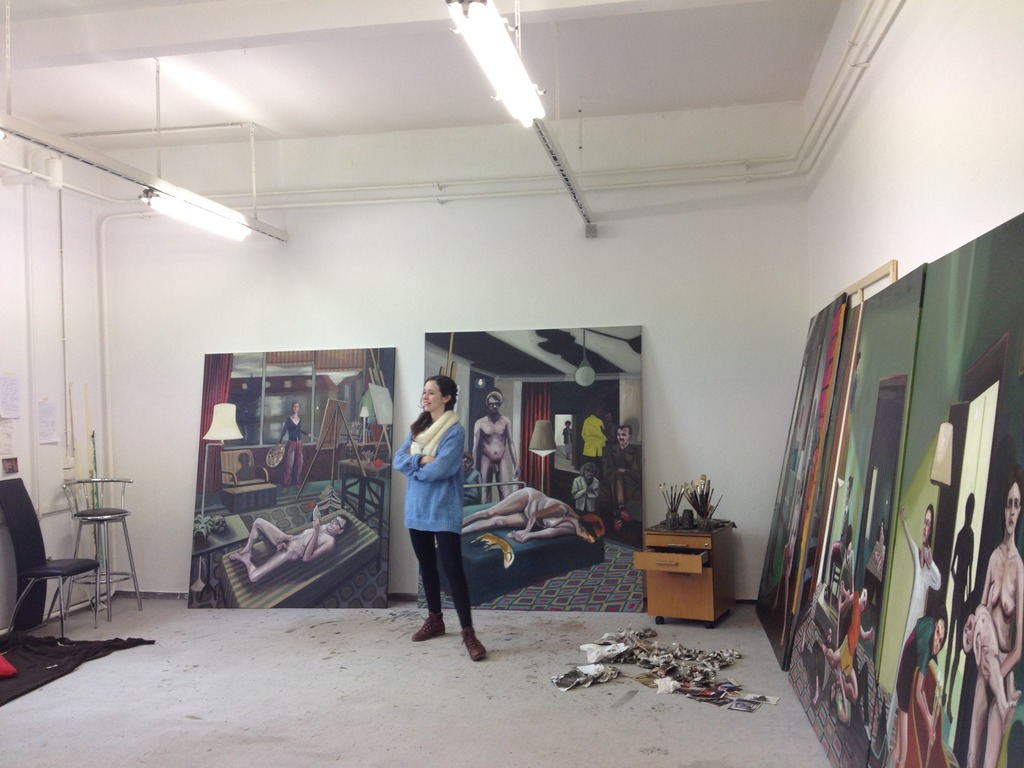
In relation to the previous question, what is the dialogue taking place in your works between old historical and contemporary practices? Is this dialogue important to your project?
Of course. I think that for all contemporary artists, it should be important to turn around and critically observe or admire old creations. I like to use as much as I can from these walks through the past. In fact, this attitude––between thief and interpreter––is very contemporary.
Which artists, whether classic or contemporary, have influenced your work?
In the short road I have walked, there are many artists whom I owe so much. The Flemish Primitives such as Memling, Van Eyck, and Van der Weyden are absolutely great; painters from The Dutch School such as Rembrandt, Hals, and Vermeer; from Spain: Velazquez, El Greco, and Goya; and avant-garde innovators such as Manet, van Gogh, Toulouse-Lautrec, and Kirchner. There are also many contemporary influences such as Balthus, Lucian Freud, Bacon, Hockney, Hopper, Paula Rego, Gerhard Richter, Peter Blake, Jeff Wall, and many others from my studies at my school in Leipzig.
Your artist statement says you’ve been working with Imagines for two years. What is the scope of this project? Are there other paintings or projects you’re working on outside of this series?
For over two years I’ve focused on the Philostratus text. The result was a series of around 14 large paintings, plus several prints and drawings. I am now working on a new project that also brings literature and painting together in different ways. The project is still in its early stages, but when the results begin to materialize, you’ll see what it’s about.